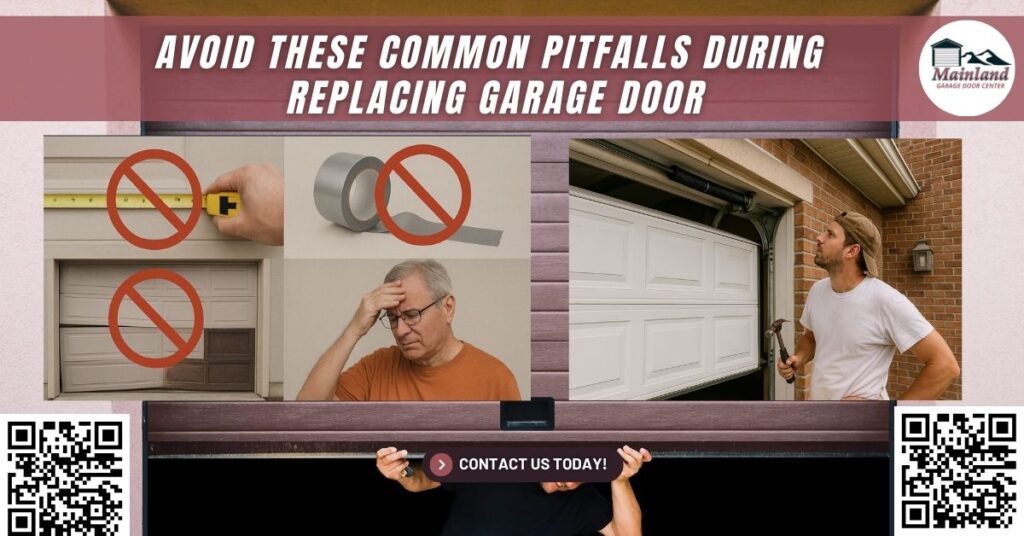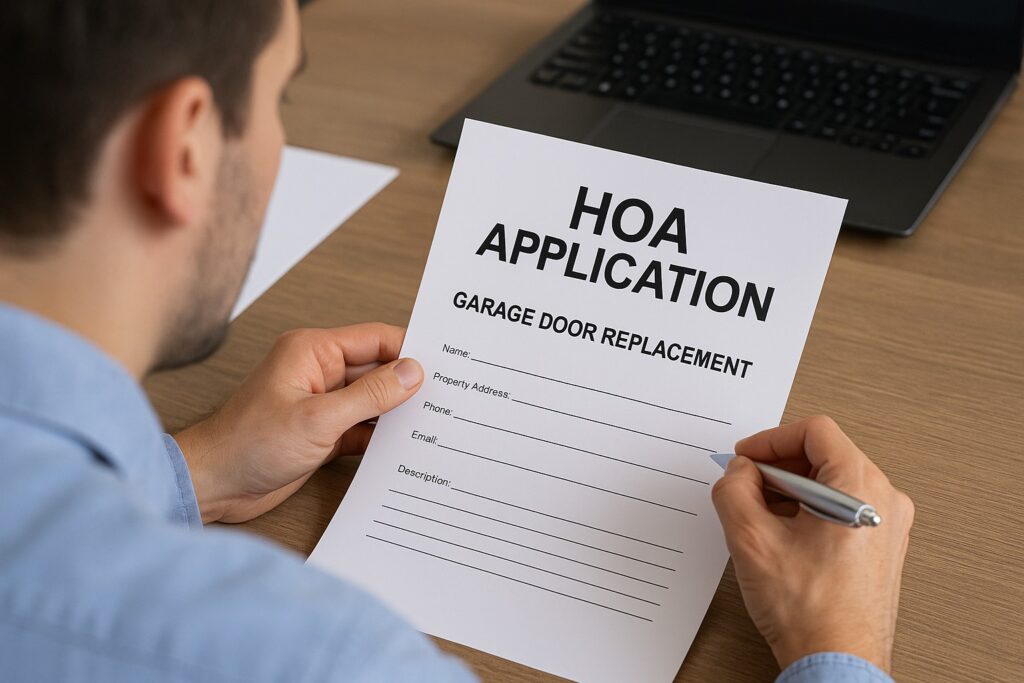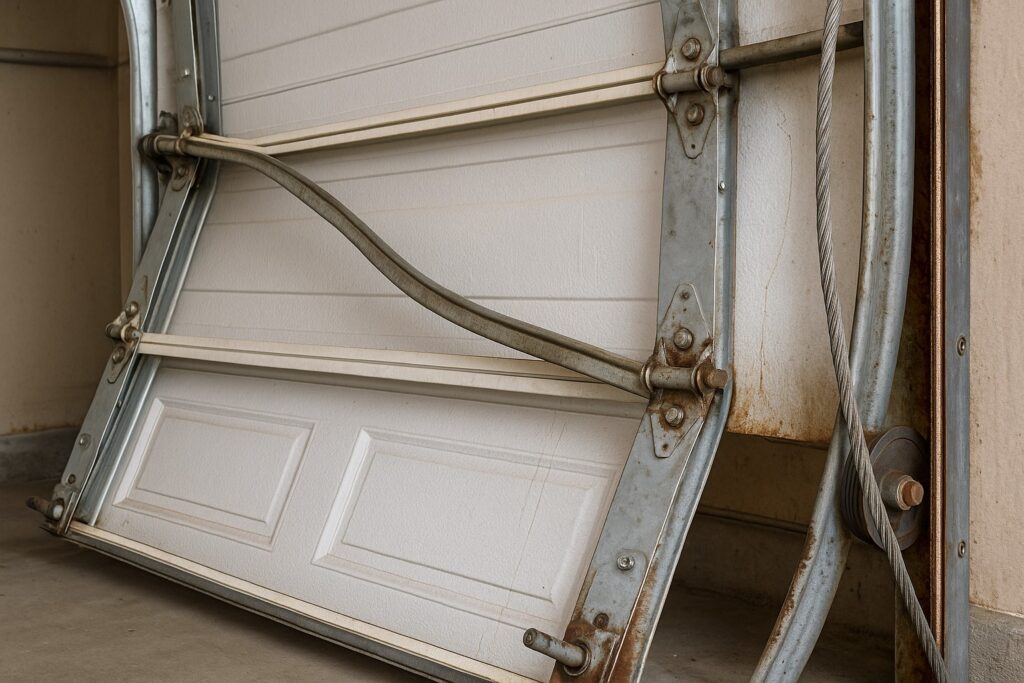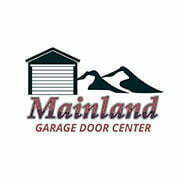Replacing Garage Door? Avoid These Common Pitfalls for a Safer, Smoother Experience

One Texas City homeowner thought replacing their garage door would be a quick weekend DIY project. Armed with a power drill and a YouTube tutorial, they got to work. But within days, the newly installed door was off its vertical tracks, misaligned panels blocked smooth operation, and the garage door opener failed to respond. What started as a money-saving attempt turned into a costly repair job. That’s when they called us at Mainland Garage Door Center, and we were happy to help.
According to the U.S. Consumer Product Safety Commission, there are over 20,000 garage door-related injuries every year, often tied to poor installation or equipment failure. The garage door is the largest moving part of any home. From torsion springs to vertical track alignment, every detail matters when installing or replacing a garage door. It’s a job that requires precision, strength, proper safety procedures, and the right tools.
If you’re thinking of upgrading to a more energy-efficient garage door, improving curb appeal, or replacing an old system, avoid these common mistakes. Below is your step-by-step guide to a successful garage door installation and how to steer clear of the most frequent pitfalls.
1. Choosing the Wrong Garage Door Size or Type
One of the first and most critical mistakes homeowners make is choosing a garage door that doesn’t fit properly. Not all garage door openings are the same, and choosing the wrong size can throw off the entire installation process. A misfit door won’t mount correctly, won’t close fully, or may stress the opener motor, rollers, and tracks.
When replacing a garage door, take precise measurements of the garage door opening including the width, height, side room, headroom, and backroom. Also, consider the garage wall space needed for the horizontal tracks and torsion tube to fit properly. Residential garage doors come in various sizes and configurations single doors, double doors, sectional panels, or tilt-up doors.
Pro Tip: Consult with a professional garage door technician to choose the right door size, style, and materials. Think about your local weather (especially in Texas City), insulation needs (high R-values for energy efficiency), and garage usage. Whether you’re selecting a steel door, composite wood, or insulated panels, these choices affect long-term performance and energy savings.
2. Ignoring Local Building Codes and HOA Rules
Texas homeowners, especially in areas like Texas City, must comply with building codes, safety regulations, and HOA (Homeowners Association) guidelines. Many areas require garage doors to meet wind-load standards due to hurricane risks. Installing a new garage door that doesn’t meet local code can result in fines, forced removal, or even structural hazards.

Garage doors must be installed with proper support, secured with strong flag brackets, center brackets, and end bearing plates that meet load-bearing codes. Additionally, the system must be anchored properly to the header using lag bolts and secured along the side jambs.
Avoid This Mistake By:
- Checking Texas City wind-load requirements
- Consulting your HOA about approved garage door colors, panel styles, or materials
- Getting a permit before starting your garage door installation project
Mainland Garage Door Center always ensures your new garage door meets all local codes and enhances both curb appeal and safety.
3. Attempting a DIY Installation Without Experience
Installing or replacing a garage door is not a simple DIY job; it’s a complex process requiring mechanical knowledge, proper tools, and a deep understanding of spring tension systems. From lifting heavy garage door panels to adjusting torsion springs, there are numerous steps where things can go wrong.
DIY installers often struggle with:
- Incorrect spring tension (leading to door imbalance)
- Misaligned vertical and horizontal tracks
- Improper bracket placement
- Weak cable systems or unfastened bottom brackets
The result? Doors that stick, fail to open, or slam shut dangerously.
Essential Tools for Professional Installation:
- Power drill and vise grip
- Level, tape measure, and wrench set
- Torsion bar and winding rods
- Garage door lubricant
- Ladder, safety glasses, and gloves
Let professionals handle the technical tasks like spring winding, opener calibration, and final safety checks. We use precise instructions and follow every step to ensure safe operation and long-term reliability.
4. Not Replacing Old Hardware or the Garage Door Opener
Many homeowners try to reuse old hardware when installing a new door, hoping to save money. But worn-out or incompatible parts like bent tracks, rusted hinges, frayed cables, or outdated openers will reduce performance and increase the risk of failure.

Even if your existing garage door opener appears to work, it may lack the horsepower or smart features needed for your new insulated or heavier steel door.
Don’t Forget to Replace:
- Brackets, bolts, and fasteners
- Hinges and rollers
- Torsion springs and torsion tube
- Garage door opener with new remote systems
- Track system and bearing plates
Upgrade Tip: Consider installing a modern, smart garage door opener that includes Wi-Fi connectivity, battery backup, and ultra-quiet belt drive systems. This enhances your home’s security and convenience while increasing resale value.
5. Misaligning Tracks and Garage Door Panels
For a garage door to operate smoothly, the tracks must be perfectly aligned vertically and horizontally. Misaligned tracks cause the door to grind, jam, or wear unevenly, leading to costly repairs. Panels that are uneven can create gaps, allow drafts, and reduce insulation effectiveness.
Key Considerations:
- Vertical tracks should be plumb and bolted securely to the garage wall
- Horizontal tracks must be level and supported with proper hangers
- Each garage door panel must align flush with the adjacent section
- Screws and bolts should be tightened in the correct clockwise pattern
Helpful Tools: Level, chalk line, adjustable wrench, and socket driver.
Misalignment is one of the top reasons we’re called to perform garage door repair services after DIY installations. Let the professionals ensure that each step, from setting the bottom panel to the top section, is done right the first time.
6. Ignoring Garage Door Balance and Spring Tension
Garage door springs, especially torsion springs, are crucial to safe, smooth operation. They counterbalance the heavy weight of the door, allowing the opener to lift and lower the door effortlessly. If spring tension is off, the door won’t stay open or may slam shut.
Symptoms of Poor Balance:
- Door is hard to lift manually
- Opener struggles or stops mid-operation
- Door doesn’t stay halfway open
Professional Steps to Ensure Proper Tension:
- Measure the weight of the new door
- Select the correct torsion spring (based on door weight and height)
- Use winding bars to apply equal turns of tension on both sides
- Test for balance using manual lifting
This process also includes ensuring the cable drums, torsion tube, and center bracket are properly secured to distribute spring force evenly.
7. Skipping Maintenance After Installation
Garage doors require regular maintenance, even when newly installed. Many homeowners skip upkeep, thinking the system is “set it and forget it.” Unfortunately, without proper lubrication, bolt tightening, and visual inspection, components wear out quickly.
Essential Maintenance Tasks:
- Lubricate tracks, rollers, hinges, and springs every 6 months
- Inspect cables, brackets, and panels for damage
- Tighten loose screws and bolts
- Check the opener’s auto-reverse function
- Clean insulation to maintain energy efficiency
We recommend scheduling annual maintenance services with Mainland Garage Door Center to prolong the life of your garage door and avoid unexpected failures.
8. Choosing the Cheapest Option Instead of the Right One
Budget is important, but selecting the cheapest door or service provider can result in low-quality materials, weak insulation, poor aesthetics, and a short lifespan. A garage door is an investment that affects your home’s appearance, energy consumption, and security.
What to Look For in a Quality Garage Door:
- High R-values for better insulation and to conserve energy
- Durable panels and frames with steel or composite cores
- Stylish top sections and window options for curb appeal
- Multi-layer construction for strength and noise reduction
Also, ensure that the door includes all necessary hardware: safety cables, end brackets, flag brackets, center support, and torsion spring system.
9. Overlooking Safety Features
Safety should never be optional. Many older or improperly installed garage doors lack critical safety components. Modern systems now include:
- Auto-reverse sensors
- Emergency release cords
- Pinch-resistant hinges
- Tamper-resistant brackets
These features prevent accidents and protect families, children, and pets from injury.
Pro Installation Includes:
- Testing the auto-reverse system
- Securing the emergency release cable
- Ensuring proper cable drum and spring placement
- Safe routing of the garage door opener wiring
Never compromise safety for speed. At Mainland Garage Door Center, every installation includes a safety checklist to ensure secure operation.
10. Hiring an Unqualified Installer
A poorly trained or unlicensed installer can cause more harm than good. Common mistakes include:
- Skipping spring safety steps
- Misplacing the center and flag brackets
- Failing to level the door properly
- Ignoring opener compatibility
Always choose a professional garage door company with verified experience, positive reviews, and proper insurance. At Mainland Garage Door Center, we’ve fixed dozens of incorrect installations, saving our customers time, money, and stress.
How Can Mainland Garage Door Center Help You?
At Mainland Garage Door Center, we specialize in residential and commercial garage door services across Texas City, TX, and surrounding areas. Whether you’re replacing a garage door for added curb appeal, upgrading your garage door opener, or need professional installation for safety and energy efficiency, we’re here for you.
Our Services Include:
- New garage door installation (with high R-value insulation and aesthetic appeal)
- Garage door opener upgrades with smart connectivity
- Replacement of hinges, springs, brackets, and other critical components
- Repairs and regular maintenance to ensure safe, smooth operation
📍 Visit us: 10000 Emmett F Lowry Expy Avenue 9, Texas City, TX 77591
📞 Call now: (832) 536-6690
Let us help you install the right garage door with safety, durability, and beauty in mind. Call today for your free estimate and experience the difference with Mainland Garage Door Center!
Frequently Asked Questions (FAQs)
1. How long does it take to replace a garage door?
Replacing a garage door typically takes 4–6 hours with a professional team, depending on the door size and whether additional hardware or opener installation is required.
2. Can I reuse my existing garage door opener with a new door?
You can reuse an existing opener if it’s compatible with the new door’s weight and design, but older models may lack the power or features needed for safe operation.
3. What is the average lifespan of a garage door?
Most garage doors last 15–30 years with proper maintenance, depending on material quality, weather exposure, and usage frequency.
4. Is it worth getting an insulated garage door in Texas?
Yes, an insulated garage door helps conserve energy, regulate interior temperatures, and reduce noise, especially beneficial in hot climates like Texas.
